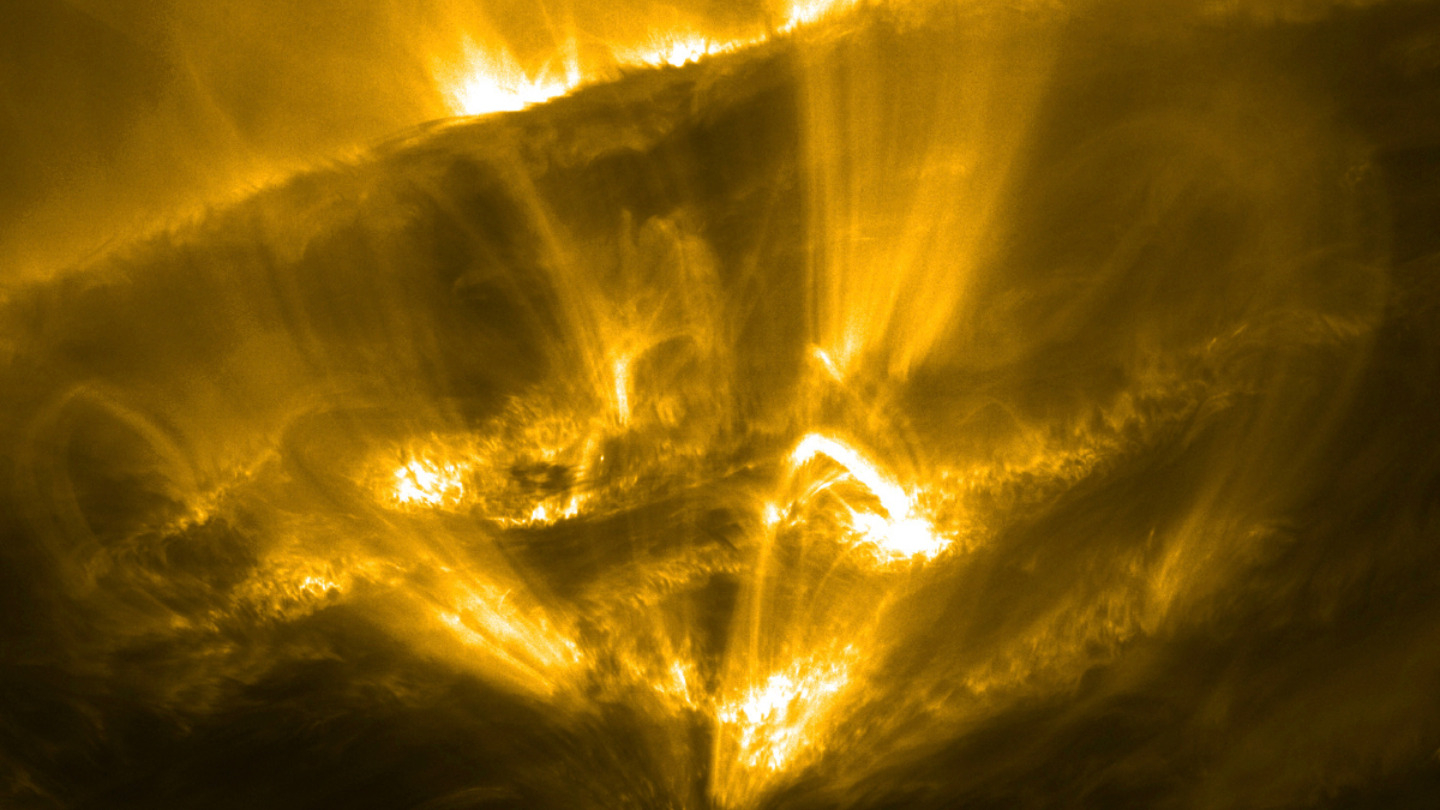Plasma rain in the sun’s atmosphere makes a splash when it lands. New observations from the European Space Agency’s Solar Orbiter have revealed previously unseen details of how this coronal rain falls, including bright fireball effects and sudden upward surges in plasma.
The corona is the sun’s wispy upper atmosphere, the sizzling tangle of plasma and magnetism that is visible during a total eclipse (SN: 6/30/19). When clumps of scorching-hot plasma in the corona suddenly cool, they condense and fall toward the solar surface, just like water droplets in Earth’s atmosphere. This coronal rain has been observed before, but details of its formation and falling were fuzzy (SN: 5/24/18).
The 2020 launch of Solar Orbiter promised to change that (SN: 2/9/20). The probe is making passes over the sun’s unexplored polar regions, carrying high resolution cameras and other instruments to investigate solar mysteries. In late March 2022, Solar Orbiter made its closest approach to the sun to date, swooping within 49 million kilometers of our star — about a third of the distance between the sun and Earth.
In images from the spacecraft taken during that close encounter, Antolin and colleagues discovered a new feature in the coronal rain. As the plasma raindrops fell, the region immediately below them brightened. The researchers think the brightening came from other plasma below the falling rain getting compressed and heated, similar to the way meteors in Earth’s atmosphere can create fireballs just ahead of the falling rocks (SN: 2/15/13).
2023-07-12 08:00:00
Original from www.sciencenews.org
